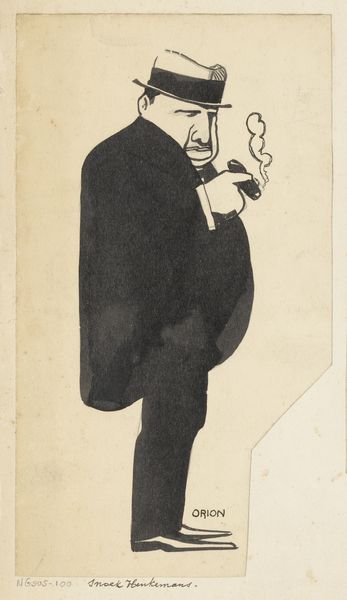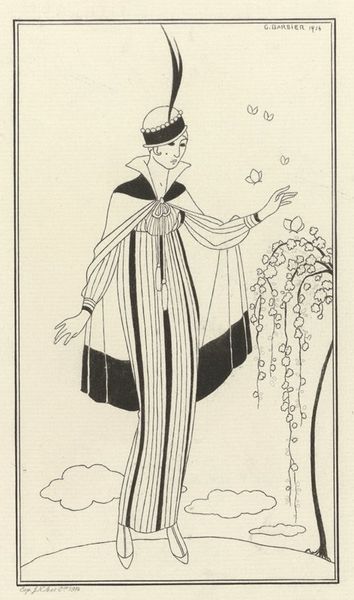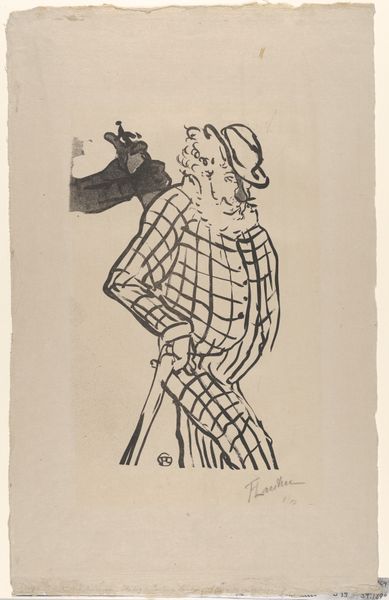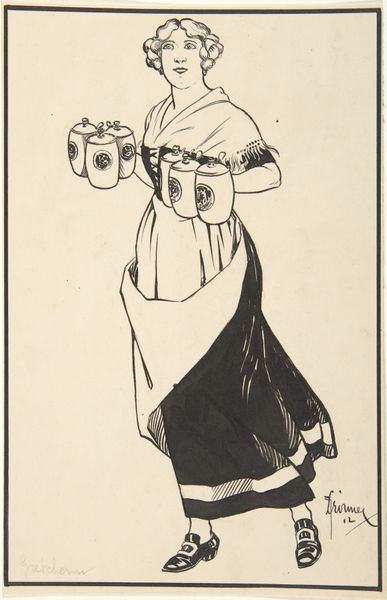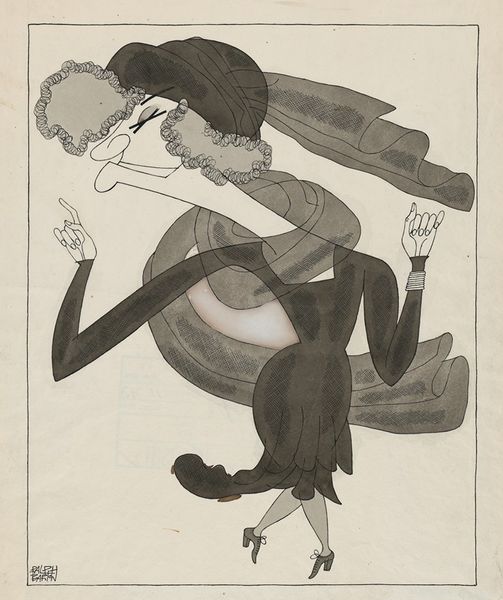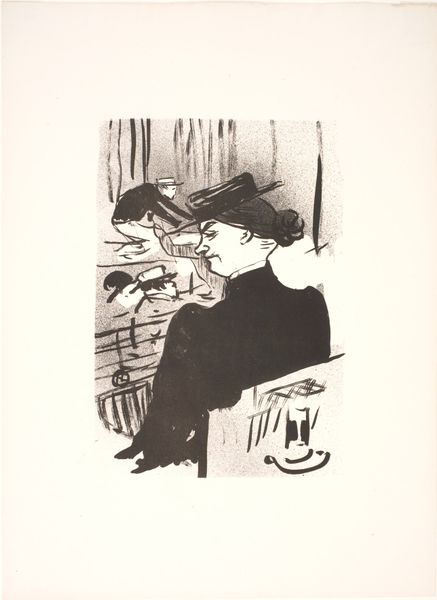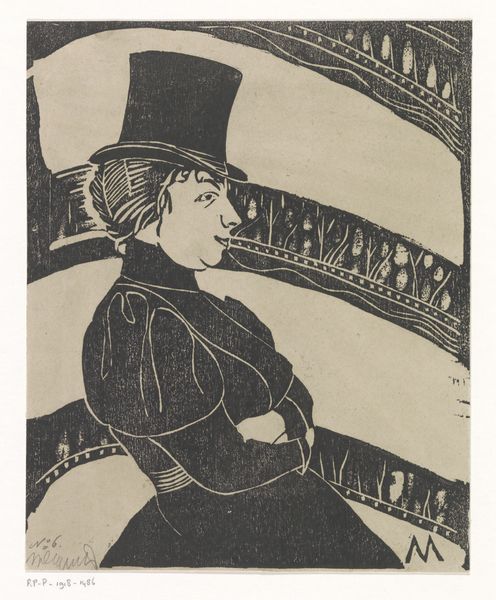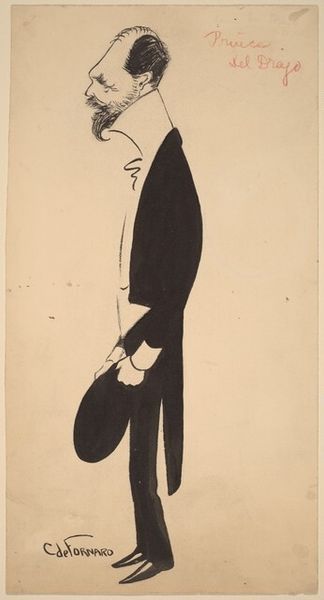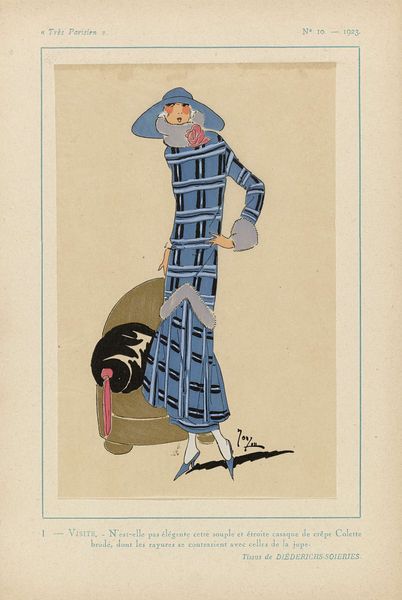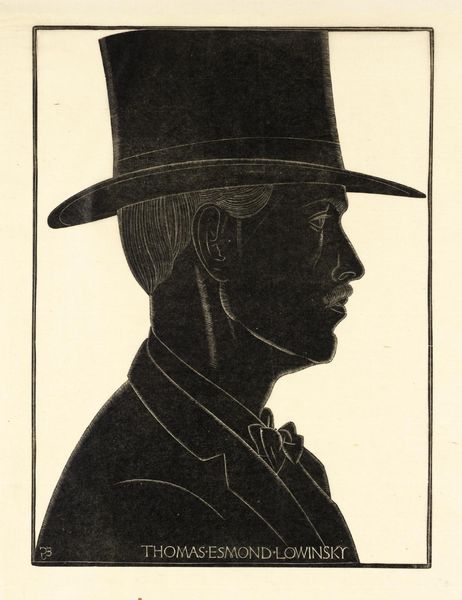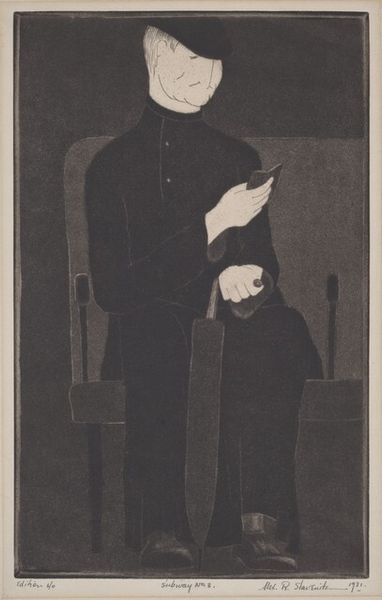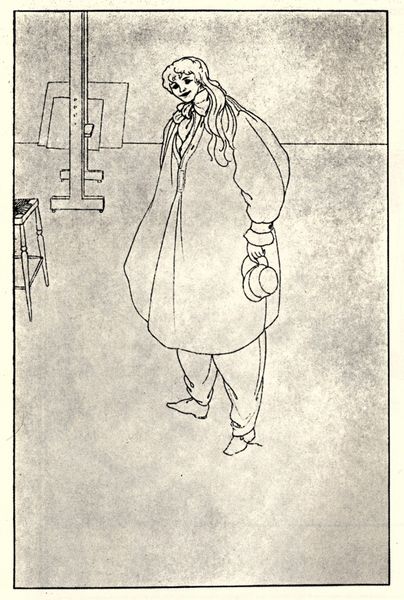
drawing, lithograph, print, poster
#
portrait
#
drawing
#
negative space
#
lithograph
# print
#
caricature
#
caricature
#
figuration
#
symbolism
#
post-impressionism
#
poster
Dimensions: 54-15/16 x 39-3/16 in. (139.5 x 99.5 cm)
Copyright: Public Domain
Editor: Here we have Toulouse-Lautrec’s “Aristide Bruant, dans son cabaret,” a lithograph poster from 1893, currently residing at the Metropolitan Museum of Art. There’s such boldness in the flat planes of color. What do you see when you look at it? Curator: The focus here, for me, lands squarely on the printmaking process. Consider the original purpose: mass production. This wasn’t meant for a salon; it’s advertising for Aristide Bruant's cabaret. The materiality of the poster itself - the cheap paper, the quick lithographic process - speaks to the democratization of art at the time. Editor: So, you’re saying the meaning is less about Bruant himself and more about how it was made and who it was for? Curator: Precisely. The lithograph allowed for relatively cheap reproductions. Think about the working class, those frequenting the cabarets, who might’ve seen this plastered around Montmartre. The impact is in its accessibility. Look at how he simplifies form – large shapes, strong outlines – it's designed to be eye-catching when printed quickly and repeatedly. It is not high art but it democratizes it. Editor: It is so interesting to think about it in those terms. It kind of shifts your perspective away from just the image to also how that image would have been circulating in a social context, its effect of multiplying art making. Curator: Exactly. We move away from a single genius artist to considering the workshops and labor involved in churning these out, changing how art is produced, shared and experienced.
Comments
No comments
Be the first to comment and join the conversation on the ultimate creative platform.
